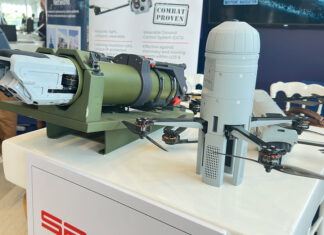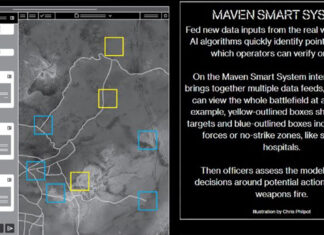Start < Page 3 of 7 >
High speed wireless data networks are integrating communications between different command levels down to the divisions and brigades. To enable modern image-rich multimedia connectivity, substantial infrastructure enhancement is required, primarily in the introduction of computing and high-speed networking at the lower echelons, with the deployment of high speed, wireless data-communications backbone (such as the future WIN-T) spanning throughout the theater of operation. Such extensions can now reach battalions, with deployed line-of-sight terminals high-speed links. Data communications is required for all facets of military activities, including transfer of reports.
Modern C2 systems rely on Geographical Information Systems (GIS) which process and create map-based displays of information such as unit status, target information, intelligence reports, operational plans and logistics activities. The fusion and spatial presentations of information from multiple sources contribute to clear situational understanding (SU) of complex situations and contribute to effective distribution of information to the relevant users throughout the battlespace. One example of such a system is the introduction of blue-force tracking service, which relies on advanced voice/data and position-location reporting radio systems, which are an integral part of the Force XXI Battle Command Brigade and Below (FBCB2) system.
With the introduction of faster transfer rates, and availability of data-driven systems below the brigade level, modern armies are beginning to deploy integrated Battle Management Computing (BMC) system environments to handle and process multi-dimensional information flows (reports, maps, images, videos), and process them into these situational pictures that are shared and relayed back to the fighting elements and up to the highest level of command. The network backbone provided for such applications relies on high capacity High Capacity Digital Radios or Wideband Network radios (WNR) such as the NTDR used by the US Army “digital divisions” and the HCDR utilized for the British Bowman system. These systems can transfer data at rates of few hundred kbps up to megabit rate, depending on the station’s position, mobility and bandwidth utilization.
Despite their clear advantages, Radio links utilizing VHF/UHF voice and data networks, such as CNR, SINCGARS, EPLRS and future JTRS are limited by terrain and range. Typical division area of responsibility usually extends far beyond the reach of such systems. To gain full theater coverage, satellite communications, ground and aerial radio relays are used, including such deployed on aircraft and UAVs.
Additional parts of this article:
- Military Command and Control (C2) and Mobile Networking
- Mobile Cellular Networks in Military Use
- Military Wireless Data Networks
- Tactical Mobile Broadband Networks
- Tactical Satellite Communications Networks
- Command and Control (C2) Systems for the Tactical Echelon
- Dismounted & Mobile Command and Control (C2) Systems



















